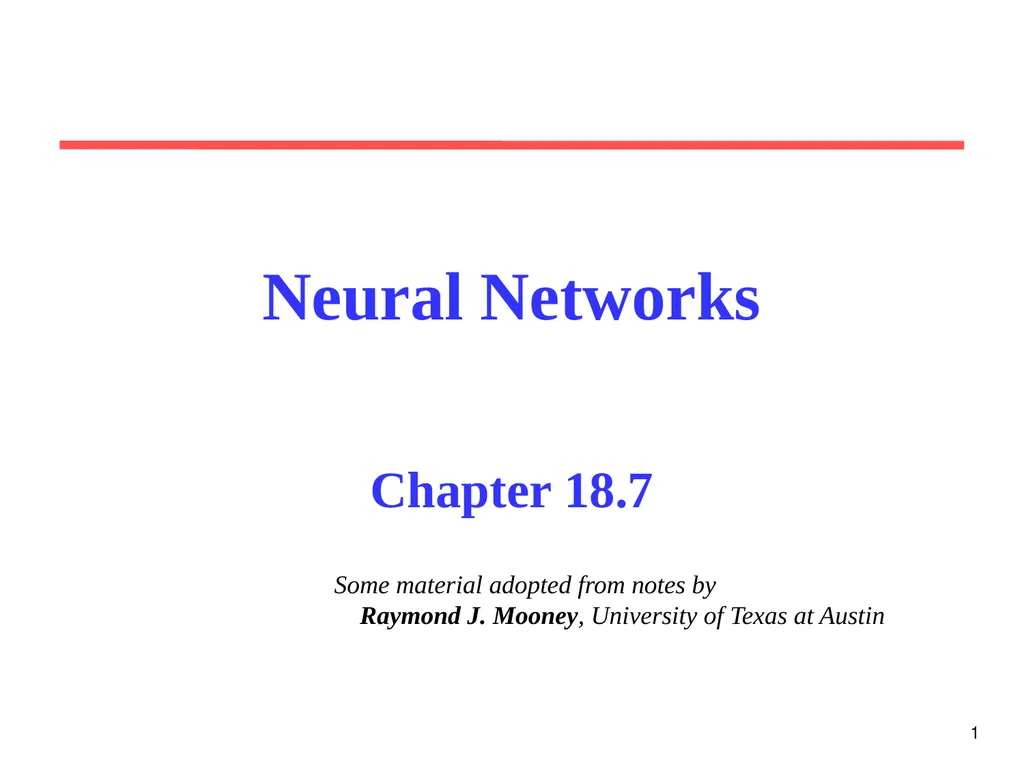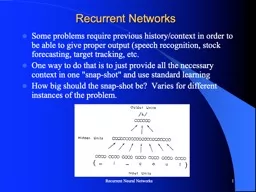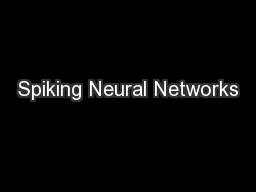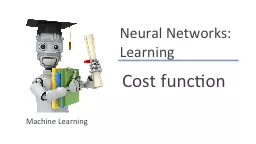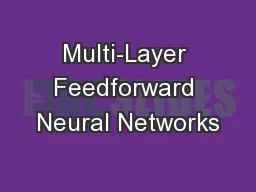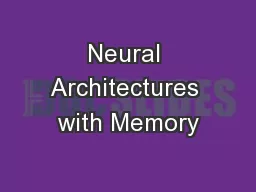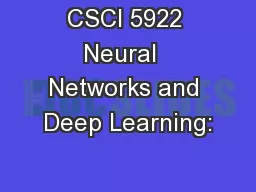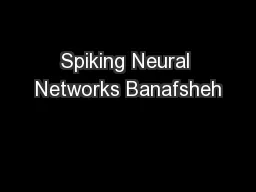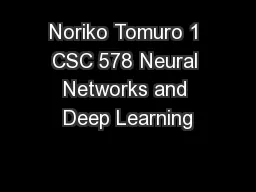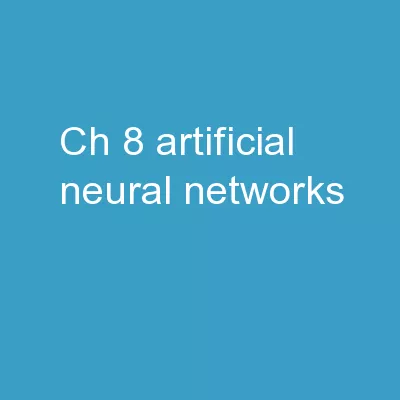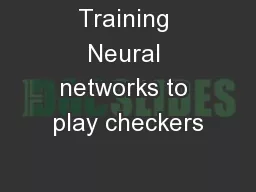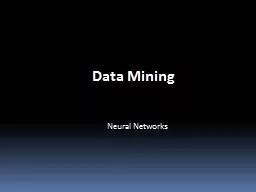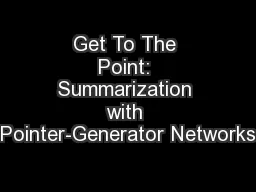1 Neural Networks Chapter 18.7 Some material
Author : luanne-stotts | Published Date : 2025-06-23
Description: 1 Neural Networks Chapter 187 Some material adopted from notes by Raymond J Mooney University of Texas at Austin Introduction What is an artificial neural network A large set of nodes units neurons processing elements Each node has
Presentation Embed Code
Download Presentation
Download
Presentation The PPT/PDF document
"1 Neural Networks Chapter 18.7 Some material" is the property of its rightful owner.
Permission is granted to download and print the materials on this website for personal, non-commercial use only,
and to display it on your personal computer provided you do not modify the materials and that you retain all
copyright notices contained in the materials. By downloading content from our website, you accept the terms of
this agreement.
Transcript:1 Neural Networks Chapter 18.7 Some material:
1 Neural Networks Chapter 18.7 Some material adopted from notes by Raymond J. Mooney, University of Texas at Austin Introduction What is an (artificial) neural network A large set of nodes (units, neurons, processing elements) Each node has input and output Each node performs a simple computation by its node function Weighted connections between nodes Connectivity gives the structure/architecture of the net Connections/links have directions What can be computed by a NN is primarily determined by the connections and their weights A very much simplified version of networks of neurons in animal nerve systems Introduction Von Neumann machine -------------------------------------------------------------------------------------------------------------------------------------------------------------------------- One or a few high speed (nm second) processors with considerable computing power One or a few shared high speed buses for communication Sequential memory access by address Problem-solving knowledge is separated from the computing component Hard to be adaptive Human Brain -------------------------------------------------------------------------------------------------------------------------------------------------------------------------- Large # (1011) of low speed processors (ms) with limited computing power Large # (1015) of low speed connections Content addressable recall (CAM) Problem-solving knowledge resides in the connectivity of neurons Adaptation by changing the connectivity Biological neural activity Each neuron has a body, an axon, and many dendrites Can be in one of the two states: firing and rest. Neuron fires if the total incoming stimulus exceeds the threshold Synapse: thin gap between axon of one neuron and dendrite of another. Signal exchange Synaptic strength/efficiency Introduction ANN -------------------------------------------------------------------------------------------------------------------------------------------------------------------------- Nodes input output node function Connections connection strength Bio NN -------------------------------------------------------------------------------------------------------------------------------------------------------------------------- Cell body signals from other neurons firing frequency firing mechanism Synapses synaptic strength Highly parallel, simple local computation (at neuron level) achieves global results as emerging property of the interaction (at network level) Pattern directed (meaning of individual nodes only in the context of a pattern) Fault-tolerant/graceful degrading Learning/adaptation plays important role. Node Input Each node has one or more inputs from other nodes, and one output to other nodes Input/output values can be Binary {0, 1}; Bipolar {-1, 1}; or Continuous (bounded or not) Weighted sum of inputs ANN Neuron Models Node Functions Step function Ramp function Node functions (linear) Node functions (non-linear) Step functions and ramp functions Sigmoid functions (differentiable) Sigmoid function S-shaped Continuous and everywhere differentiable Rotationally symmetric Asymptotically approaches saturation points Examples: Logistic function Hyperbolic tangent Network Architecture (Asymmetric) Fully Connected Networks Every node is connected to every other node Connection may be excitatory (positive), inhibitory (negative), or irrelevant ( 0). Most general Symmetric
